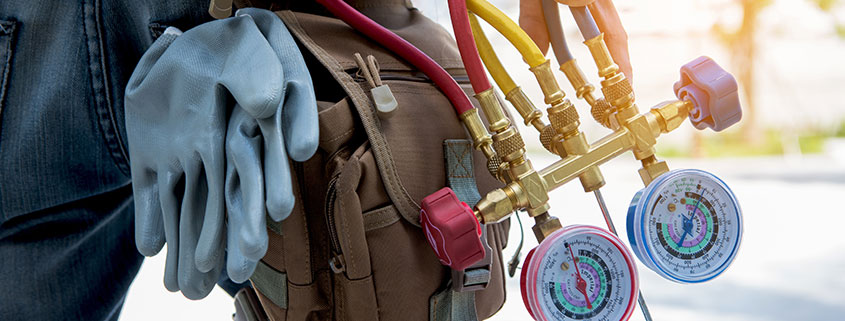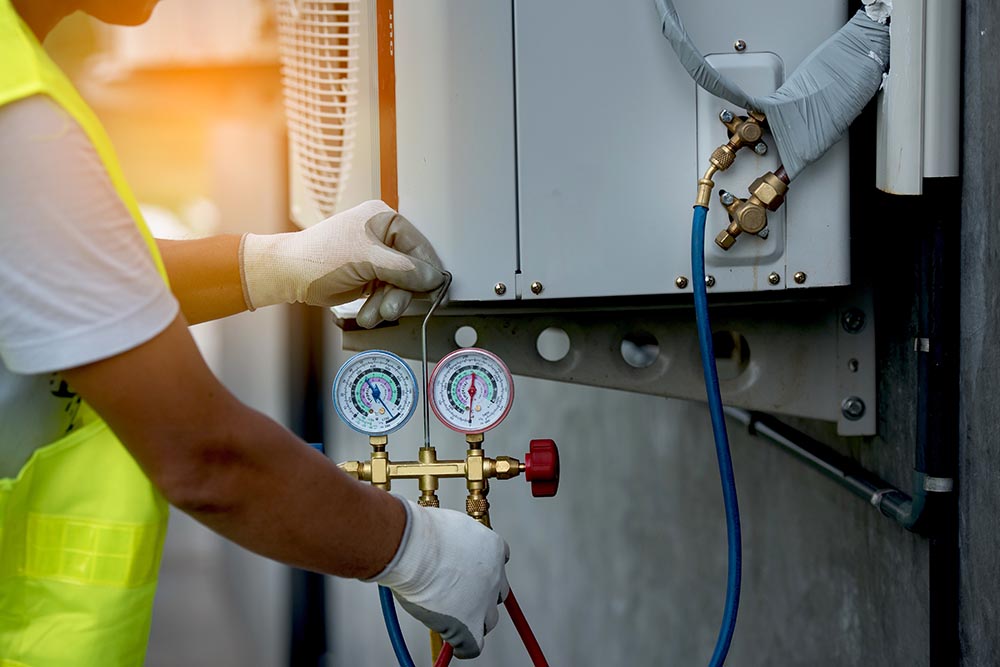Smart Strategies to Make the Most of Your New furnace replacement
Smart Strategies to Make the Most of Your New furnace replacement
Blog Article
Exactly How a Heat Pump and Heater Job Together to Optimize Your Home's Home heating Performance
Recognizing exactly how a heatpump and heating system interact is necessary for property owners seeking reliable heating remedies. Each system has its staminas, providing a well balanced method to home comfort. The heatpump excels in moderate temperature levels, while the heater provides rapid warmth throughout extreme cold. This synergy not just reduces energy prices but additionally enhances the life-span of both appliances. What aspects influence this partnership, and how can house owners optimize their benefits?
Understanding Warmth Pumps: How They Function
Numerous people might be unknown with their inner functions, heat pumps play a crucial function in modern heating systems. These tools operate by moving heat from one place to an additional, utilizing the principles of thermodynamics. In chillier months, a warm pump removes heat from the outside air, ground, or water, and transfers it inside your home to heat the living room. Conversely, during warmer months, it can reverse the process, working as an air conditioning unit by getting rid of warmth from inside to the outside.Heat pumps contain an evaporator, compressor, expansion, and condenser shutoff. The cooling agent within the system takes in warm as it vaporizes at reduced temperature levels and stress. The compressor then boosts the pressure and temperature of the refrigerant, enabling it to release heat as it condenses. This efficient procedure can greatly reduce energy intake contrasted to typical home heating techniques, making heatpump a sustainable option for climate control in homes.
The Role of Heaters in Home Home Heating
Heaters play a necessary duty in home heating by giving a dependable source of heat throughout the chillier months. They operate by creating warm through burning or electric resistance, distributing it throughout the home using air ducts or radiant systems. The efficiency of a heater is usually gauged by its Annual Gas Application Effectiveness (AFUE) rating, which shows exactly how efficiently the unit transforms fuel right into heat.Furnaces can utilize various power resources, consisting of gas, oil, power, or gas, permitting property owners to choose the most ideal choice for their demands. Unlike warm pumps, which might have a hard time in severe cold, heating systems keep constant efficiency, guaranteeing that interior temperatures stay comfy no matter outside problems. Additionally, contemporary heaters typically come equipped with sophisticated modern technology, such as clever thermostats and variable-speed blowers, boosting their efficiency and responsiveness. This adaptability makes heaters an important part in comprehensive home heating strategies.

Benefits of Using Both Equipments With Each Other
Integrating the strengths of both furnaces and warmth pumps can cause a more reliable and efficient home heating service. Utilizing both systems permits house owners to benefit from the heatpump's power efficiency throughout milder temperature levels while depending on the heater for more severe cold conditions. This twin technique can significantly lower energy prices, as heatpump consume much less electricity than typical heating approaches when temperatures are moderate.Additionally, making use of both systems together can boost comfort degrees in the home. Warm pumps can provide regular, even home heating, while furnaces can swiftly elevate ambient temperatures when required. The integration of both systems can prolong the life-span of equipment by minimizing wear and tear on each device, as they share the workload. Eventually, home owners can delight in a well balanced, cost-efficient heating service that readjusts seamlessly to varying weather, ensuring a warm and inviting home throughout the cold weather.
Just How Warmth Pumps and Furnaces Enhance Each Other
When property owners integrate warm pumps and heaters, they create a complementary furnace that maximizes efficiency and comfort. Heat pumps operate by transferring heat from the outside air or ground, making them highly efficient in moderate climates. They excel throughout milder temperature levels, giving cost-effective heating. Conversely, furnaces create warmth via burning or electric resistance, providing strong, immediate heat throughout severe cold conditions.The combination of these two systems enables dynamic modifications based on temperature fluctuations. Throughout warmer months or milder winter months days, the heatpump can take the lead, saving energy and reducing expenses. As temperatures decline, the heating system can flawlessly engage, making certain consistent warmth throughout the home. This harmony not just enhances energy use but additionally boosts the life expectancy of both systems, as each system operates within its excellent efficiency variety. With each other, they produce a balanced setting that adapts to differing environment demands.
Maximizing Effectiveness: Tips for Homeowners
Homeowners can boost their home heating performance through numerous functional strategies. Developing a regular upkeep routine, incorporating wise thermostat modern technology, and carrying out effective insulation and securing solutions are crucial steps. These procedures not only boost comfort but likewise reduce energy prices.
Regular Upkeep Set Up
To ensure optimal heating effectiveness, developing a regular upkeep timetable is vital for any kind of home. Property owners need to prioritize routine inspections of both heatpump and heaters to determine peak efficiency. This includes changing air filters each to 3 months, as clogged up filters can greatly decrease efficiency. In addition, scheduling specialist maintenance a minimum of once a year permits technicians to recognize and resolve potential concerns before they intensify. Home owners should likewise cleanse the warmth pump's outdoor unit to avoid particles build-up that can prevent air movement. By sticking to a normal upkeep timetable, homeowners not only enhance their furnace' effectiveness however additionally extend their lifespan, resulting in higher comfort and decreased energy costs throughout the colder months.
Smart Thermostat Integration
Incorporating a wise thermostat into a home heating system can greatly boost energy efficiency, specifically as it permits for accurate control over temperature setups. These gadgets can learn the home owner's routine and preferences, instantly changing the temperature to maximize comfort while lessening energy usage. They can decrease heating throughout times when the home is vacant, reducing unneeded usage. Many wise thermostats also supply real-time energy use data, allowing property owners to make enlightened decisions regarding their home heating routines. In addition, remote gain access to using mobile phone applications allows individuals to readjust settings from anywhere, making sure the home is cozy upon return. In general, clever thermostat integration not just boosts convenience yet significantly adds to energy cost savings and performance.
Insulation and Securing Solutions
Smart thermostats play a vital role in energy effectiveness, yet their effectiveness can be considerably boosted by proper insulation and sealing options. Home owners should prioritize shielding floors, walls, and attics to reduce warm loss. High-grade insulation materials, such as spray foam or fiberglass, can greatly improve thermal resistance. Furthermore, sealing spaces around doors, air ducts, and windows avoids cold air infiltration and heat escape. Weatherstripping and caulking are effective methods for dealing with these leaks - furnace replacement. Routine evaluations for air leaks, along with using blower door tests, can help recognize trouble areas. By spending in insulation and sealing, home owners can enhance the efficiency of their heating unit, inevitably resulting in decreased energy intake and reduced utility bills
Usual Misconceptions Regarding Heat Pumps and Furnaces
What misconceptions border warm pumps and heating systems? Many people wrongly believe that heatpump are inefficient in colder environments. In truth, modern heatpump are created to operate successfully even in reduced temperature levels, providing reliable home heating throughout winter season. Another typical myth is that furnaces are constantly a lot more efficient than warmth pumps. This depends on the details look at more info energy resources and efficiency scores of the units in concern. Some might likewise assume that using both systems all at once is unnecessary, yet as a matter of fact, this mix can optimize heating performance, particularly during severe weather problems. Additionally, people usually assume that heatpump call for consistent upkeep, when truthfully, they have comparable upkeep needs to conventional furnace. By unmasking these misconceptions, property owners can make even more enlightened decisions regarding their heating alternatives, ultimately resulting in enhanced convenience and power performance in their homes.
Maintenance Considerations for Combined Solutions

Often Asked Inquiries
Can Warm Pumps Job Effectively in Very Cold Climates?
Warm pumps can have a hard time in extremely cold environments as a result of minimized performance and heat removal constraints. However, improvements in technology have actually brought about designs created for better performance in such problems, improving their stability in severe settings.
How Lengthy Do Heat Pumps and Furnaces Normally Last?
Heatpump usually last 15 to twenty years, while heaters have a life-span of 15 to three decades. Normal upkeep can prolong their longevity, guaranteeing efficient operation and lowering the demand for premature replacements.

What Is the Typical Cost of Putting Up Both Systems?
The ordinary price of setting up both a heat pump and a furnace generally varies between $5,000 to $10,000 - furnace replacement. Aspects affecting this price consist of system dimension, setup intricacy, and local labor rates
Exist Tax Incentives for Utilizing Energy-Efficient Home Heating Systems?
Lots of property owners ask about tax obligation motivations for energy-efficient home heating systems. Different government and state programs usually supply refunds or credit ratings, urging the fostering of sustainable innovations to decrease energy usage and promote ecological obligation.
How Do I Select the Right Size Heatpump and Furnace?
Selecting the right size warm pump and heating system entails determining the home's square video footage, thinking about insulation quality, and reviewing local environment. Consulting an Go Here expert can assure excellent system performance and power effectiveness based upon specific needs. heat pump installation ooltewah tn. Comprehending just how a warmth pump and heater job with each other is essential for home owners looking for reliable heating options. In chillier months, a warmth pump removes warmth from the outdoors air, ground, or water, and transfers it indoors to heat the living area. When property owners integrate warm pumps and heating systems, they create a corresponding heating system that takes full advantage of efficiency and convenience. Warm pumps operate by transferring heat from the outside air or ground, making them very reliable in modest environments. Warmth pumps can struggle in exceptionally cool climates due to reduced efficiency and warmth extraction limitations
Report this page